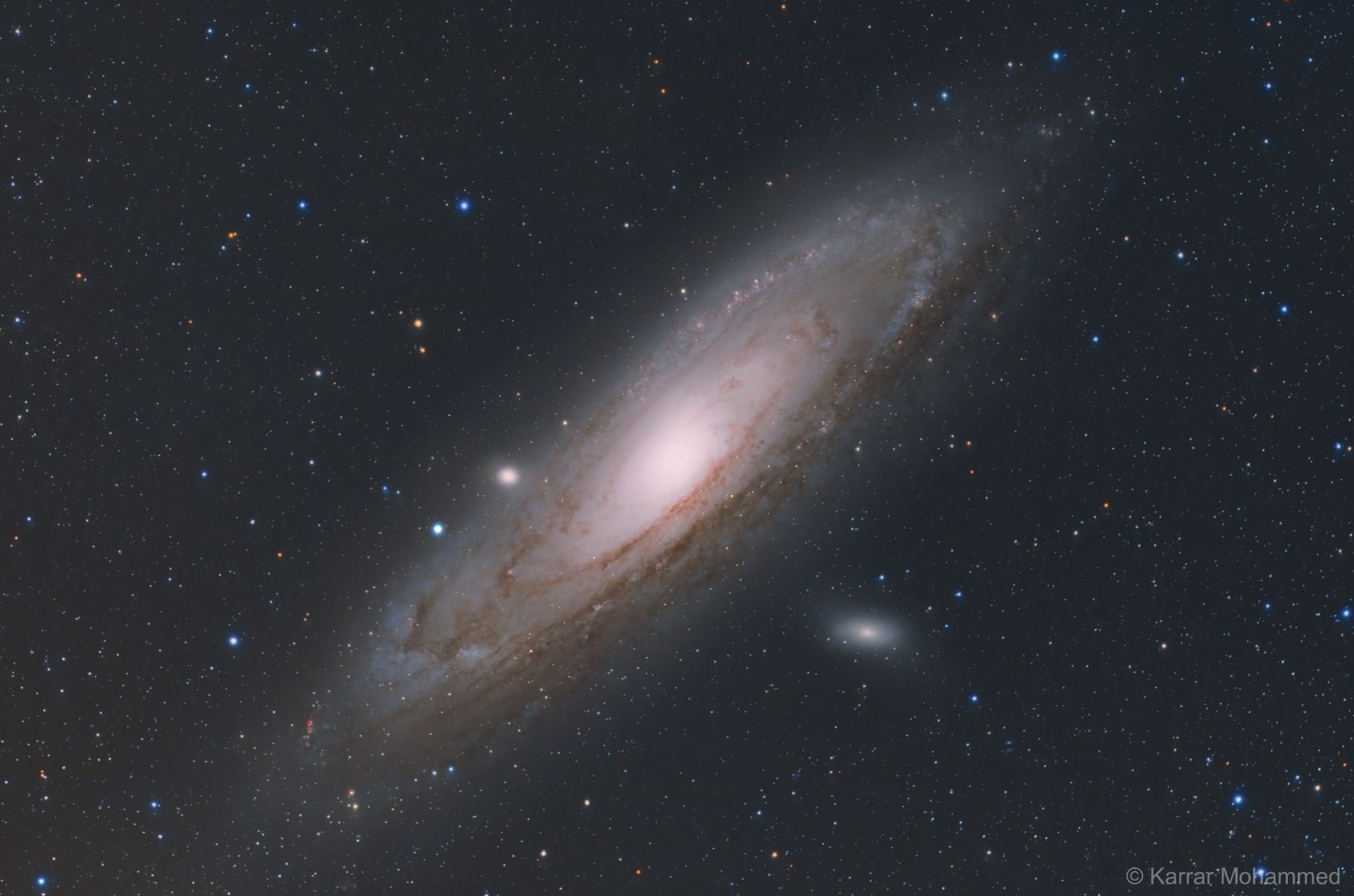EarthSky Community Photos
Submit your photo here. Comment or upvote on photo pages. Search via photographers' names. More improvements coming! To help, please donate.

Alkut.Iraq
08:00 pm
Equipment Details:
Sharpstar 94EDPH Triplet Apo with 0.8x Focal Reducer F4.4 Full Frame
Eq6 r pro
ASI 2600 MM PRO
ZWO 290MM Camera+Qhy Mini Guide Scope
ASIair Plus
ZWO EAF Focuser
ZWO EFW Electronic Filter Wheel 7x36"
Antlia V-Pro Blue 36 mm: 30×180″(1h 30′) ISO100 0°C bin 1×1
Antlia V-Pro Green 36 mm: 30×180″(1h 30′) ISO100 0°C bin 1×1
Antlia V-Pro Red 36 mm: 30×180″(1h 30′) ISO100 0°C bin 1×1
Chroma H-alpha 3nm Bandpass 36 mm: 24×300″(2h) ISO100 0°C bin 1×1
tot: 6h 30′
Bortle sky 4
Stack: Astro pixel processor
Pixinsight
https://www.astrobin.com/qjgz2m/
making it the largest member of the
The Andromeda Galaxy (IPA: /ænˈdrɒmɪdə/), also known as Messier 31, M31, or NGC 224 and originally the Andromeda Nebula, is a barred spiral galaxy with diameter of about 46.56 kiloparsecs (152,000 light-years) approximately 2.5 million light-years (765 kiloparsecs) from Earth and the nearest large galaxy to the Milky Way. The galaxy's name stems from the area of Earth's sky in which it appears, the constellation of Andromeda, which itself is named after the princess who was the wife of Perseus in Greek mythology.
The virial mass of the Andromeda Galaxy is of the same order of magnitude as that of the Milky Way, at 1 trillion solar masses (2.0×1042 kilograms). The mass of either galaxy is difficult to estimate with any accuracy, but it was long thought that the Andromeda Galaxy is more massive than the Milky Way by a margin of some 25% to 50%. This has been called into question by a 2018 study that cited a lower estimate on the mass of the Andromeda Galaxy, combined with preliminary reports on a 2019 study estimating a higher mass of the Milky Way The Andromeda Galaxy has a diameter of about 46.56 kpc (152,000 ly), making it the largest member of the Local Group in terms of extension.
The Milky Way and Andromeda galaxies are expected to collide in around 4–5 billion years,[14] merging to potentially form a giant elliptical galaxy[15] or a large lenticular galaxy. With an apparent magnitude of 3.4, the Andromeda Galaxy is among the brightest of the Messier objects,and is visible to the naked eye from Earth on moonless nights, even when viewed from areas with moderate light pollution.








